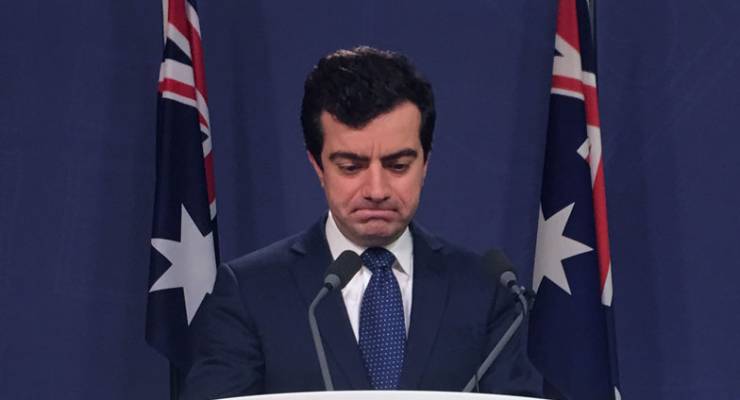
As we welcome the Lunar New Year, the question of Australia’s relationship with its largest trading and export partner is whether 2018 will be the same kind of dog of a year as 2017 was.
Last year was arguably the most difficult between the Australia and China since Kevin Rudd’s 2009 annus horribilis lead by the Defence white paper that named China as a threat and the Rio Tinto bribery scandal topped off the iron ore wars.
In 2017, the Department of Foreign Affairs and Trade decided, in its own diplomatic way, to take ever quiet aim at China in the first Foreign Affairs white paper since 2003, piping up about China’s Great Wall of Sand, its artificial islands in the South China Sea. This, China continues to assert, is none of Australia’s business — never mind that the vast bulk of our trade is shipped through it, but more on on that shortly.
But it’s on the home front where things really took a beating as the scales began falling from the eyes of Australia about the influence being wielded by China’s ruling Communist Party via its United Front Work Department (UFWD), the beginnings of what is now being called “sharp power” from China. ALP Senator Sam Dastyari lost his job over his hamfisted kowtowing to his Chinese funders. It even reached publishing, when Allen and Unwin cancelled the printing of Clive Hamilton’s book on the UFWD, Silent Invasion: How China is Turning Australia into a Puppet State.
The dog of a year reached its zenith in December when the Turnbull, a man more familiar with China that most Australian politicians, introduced new laws on political campaign financing that appears very much to target Chinese money. Yet it is Chinese investment, and investment from other part of the vast and complex string of nations we lump together as Asia, that is breathing life into Australia’s farmlands.
At the centre of the Australia-China relationship remains trade and investment and that relationship continues to go from strength to strength. In 2016 Australia’s imports from China were $62 billion and exports to China were $93 billion — in total well more than twice our No. 2 trade partner, the US ($64 billion in two way trade). Put simply, China needs us more than we need them from a trade point of view.
Yet for all the cornucopia of wealth that China has spewed forth into Australia, so far the portents are already not looking particularly good in terms having a cohesive, systematic and measured approach to China in 2018. China will flex its military might and growing regional influence in Southeast Asia. The US has not helped by appointing Admiral Harry Harris as Ambassador to Australia — a move that will have gone down in Beijing like a cup of cold sick.
There is a conga line of informed and sensible commentators who have bemoaned Australia’s schizophrenic approach to the Middle Kingdom. Instead of governments and the business community investing serious time and effort developing relationships in China that will help Australia, longer term, our politicians instead seem insistent, instead on simply barking at the moon.
新年快乐! Happy New Year!








Developing serious international policy require intelligence, insight and hard work. Are all absent?
I’d be the last person to praise any of Drumpfs appointees, but Harry Harris is probably just what is needed in a US ambassador to Australia right at this juncture. Someone to impress upon whatever government we get lumbered with over the next 3-4 years, that not putting up with Chinas interference just might be in our long-term interests.
We put up with a lot of US “interference” when they were the big power in our region – to the extent of introducing conscription so our youth could fight on their side in Vietnam. now China is shaping up to take their place, we might have to play it a bit carefully.
Anyone remember the fear & terror of Oz being bought up by the Rising Yen of Japan in the 1980s?
We were awash with wealth, such that the white shoe brigade could build things like Sanctuary Cove.
The Japanese were happy to buy but didn’t come to live in such numbers and concentrations.
I don’t, but I’d like to learn more – do you know of any good search terms I can pursue?
Try https://dro.deakin.edu.au/eserv/DU:30023535/hajdu-japaneseinvestment-2000.pdf
Michael S writes that because China imports a lot more from Australia than we import from them, they need us more than we need them. If China stops importing our holes in the ground then it is we who are in trouble. The Australian public is financially locked in to China’s cheap products. Everything seems to come from China! China could source many of its ‘holes’ from elsewhere if it had to. So, I reckon we need them more than the other.
I concur, for the reasons you state.